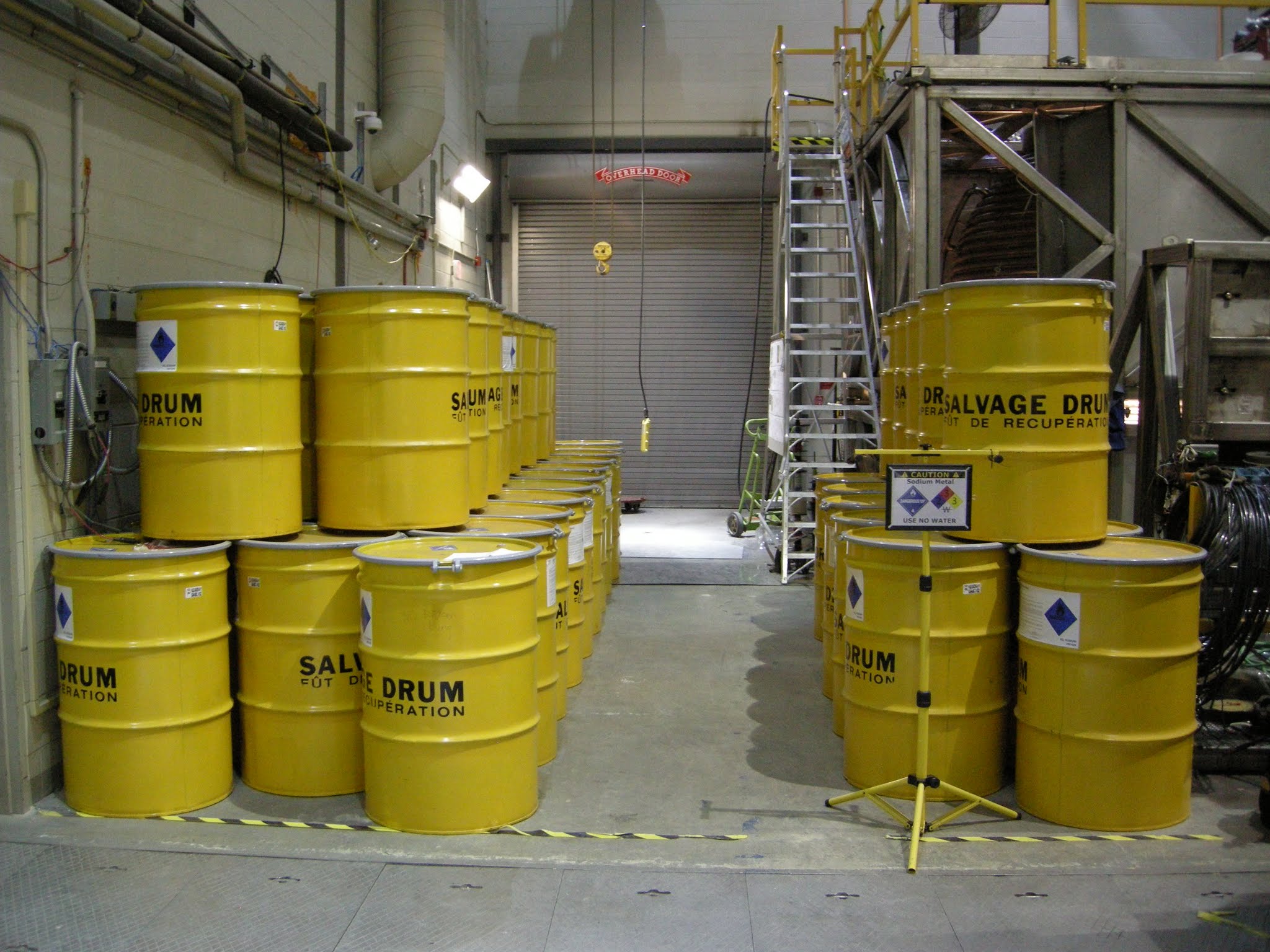A Laboratory Planetary Core
Transport, Waves, and Magnetic Fields in Spherical Couette Flow at Very High Re.
Daniel S. ZimmermanSantiago A. Triana
Daniel P. Lathrop
Work made possible by:
NSF/MRI EAR-0116129
NSF EAR-1114303
University of Maryland Physics/IREAP/Geology
The Experiment

Stats:
- Outer sphere maximum speed $$\Omega_o/2\pi=4\mathrm{Hz}$$
- Inner sphere maximum speed $$\Omega_\mathrm{i}/2\pi=\pm20\mathrm{Hz}$$
- Total rotating mass: 20 tons (18000kg)
- 7 ton (6300kg), 3m diameter shell
- 13 tons (12000kg) fluid (water, sodium metal)
- Two 250kW (350HP) motors
- Hot oil system: 120kW heating + 500kW cooling
Outer sphere at two revolutions/second
Why 13 Tons of Spinning Sodium?


- Sodium best chance for liquid metal dynamo.
- Fast rotation for self-organization.
- Large and relatively slow rotating for "strong" magnetic effects.
- Waves and other large-scale flows with low boundary friction.
Geometry & Forcing

Design:
- Geometrically similar to Earth's core: $$\Gamma = r_\mathrm{i}/r_\mathrm{o} = 0.35$$
- Imposed differential rotation (not convection!) to provide stirring in rotating frame.
- Simple geometry: good for simulation
- Common features with planetary core, not a scale model.
Dimensionless Numbers
$$Ro = \frac{\Delta\Omega}{\Omega_o},0.01<|Ro|<100 $$
$$E = \frac{\nu}{\Omega_o(r_o-r_i)^2},10^{-8}< E<10^{-6}$$
$$Re = \frac{\Delta\Omega(r_o-r_i)^2}{\nu}, 10^6 < Re < 10^8 $$
$$Rm = \frac{\Delta\Omega(r_o-r_i)^2}{\eta}, 10 < Rm < 1000$$
$$Pm = \frac{\nu}{\eta} = \frac{Rm}{Re} \sim 10^{-5}$$
$$S = \frac{B_0 (r_o-r_i)}{\eta\sqrt{\rho \mu_0}}, 0 < S < 6 $$
$$\Lambda = \frac{B_0^2}{\rho\mu_0\eta\Omega_o},0 < \Lambda < 13\:\: (2\pi/\Omega_o = 30s)$$
Hydrodynamic Outline
- Many turbulent flow states at different Ro.
- Some flow transitions show large changes in angular momentum transport.
- Turbulent scaling at fixed Ro.
Torque vs. Reynolds Number, Outer Stationary
Torque vs. Reynolds Number, Outer 1.25Hz
- $$Ro = \Delta\Omega/\Omega_o$$
State Transitions: Torque and Azimuthal Velocity
$$\small Ro = 2.33$$State Transitions: Mean Flows
State Transitions: Waves
Velocity frequency spectra:Angular Momentum Transport: Torque vs. Ro
$$\small G(Ro,Re) = f(Ro)G_\infty(Re)$$MHD Outline
- Strong generation of Bφ (Ω-effect), large Ro-dependence, peaks at Ro=+6.
- Strong applied field: new states, reduced Ω-effect, dipole moment enhancement from "dynamo-like" feedback loop.
Internal Field and External Gauss Coefficients

$$\scriptsize B_l^m = l(l+1)g_l^m$$
Internal Magnetic Field, "Weak" Applied Field
$$S=0.39$$Note: legend typo: circles are always Bφ
Internal Magnetic Field vs. Applied Field
State Changes at Strong Field
RMS Gauss Coefficients & TorqueDipole Bursting State
$$\small S=3.5, Ro = +6, Rm = 430, E = 1.2\times10^{-7} $$
20% actual speed
Dynamo-style feedback?
Axisymmetric flow can't induce external dipole
from axisymmetric applied field.
Summary
- Many different turbulent flow states in high-Re spherical Couette controlled by Ro.
- Different turbulent states have much different large scales: mean flows and waves.
- Large Ro-dependence of Ω-effect due to hydrodynamic state changes.
- Strong applied field: new states, reduced Ω-effect, dipole bursts with a "dynamo-like" feedback loop.
- Dipole enhanced by large scale nonaxisymmetric waves
- Movie code: https://github.com/danzimmerman/matlabmag
Challenges and Promises
- Data so far can provide good quantitative tests for models: Gauss coefficients, torque, waves, azimuthal and radial field.
- To model spherical Couette for dynamo purposes, need to capture same states. Do we? Re high enough?
